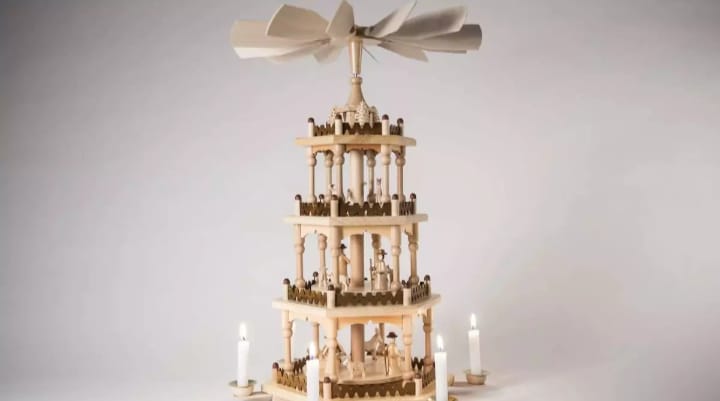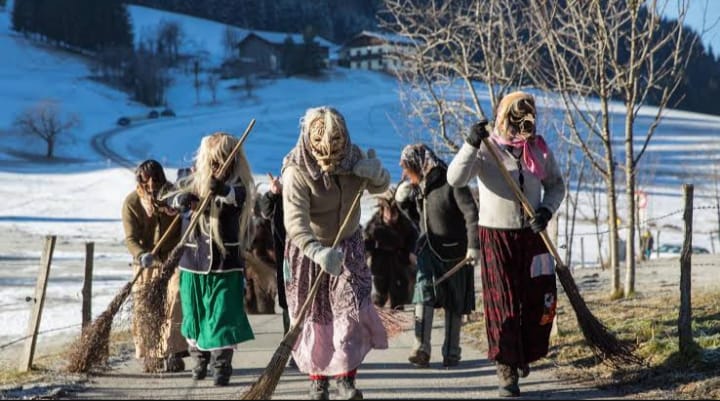
In Germany, Christmas is steeped in traditions and customs, some of which may appear peculiar to outsiders. Yet, these unique practices hold significant cultural importance and contribute to the festive spirit of Christmas in the country. Here are some unusual German Christmas traditions that might surprise you.
Knecht Ruprecht
Knecht Ruprecht is commonly portrayed as an elderly figure with a stern countenance, clad in dark, weathered attire, and often seen carrying a sack and a stick. While his exact origins remain uncertain, he seems to have roots in pre-Christian myths and legends. Some interpretations suggest that Saint Nicholas subdued Ruprecht, who was initially a forest creature or demon, and subsequently transformed him into his helper.
Read also: Christmas Bonus in Germany 2024: Expected Amounts and Tax Implications for Employees
Unlike Santa Claus, who rewards well-behaved children with gifts and sweets, Knecht Ruprecht deals with the naughty and disobedient ones. Translated as the “Servant of Ruprecht,” his primary role is to motivate children to exhibit good behavior throughout the holiday season.
For those who misbehave, they face the threat of disciplinary action with a rod and receiving coal instead of gifts. Knecht Ruprecht takes on various forms and names across different regions of Germany and Austria.
In some areas, people widely recognize and embrace him as a popular figure, while in others, he may be less known or go by alternative names like Krampus in the Alps or Pelznickel in certain parts of southern Germany.
Read also: Understanding Weihnachtsgeld: Who Qualifies for Germany’s Christmas Bonuses?
Christmas pyramid
The Weihnachtspyramide, or “Christmas pyramid,” is a classic German Christmas ornament originating from the Erzgebirge region near the Czech Republic border. Crafted from wood, it takes the form of a multi-tiered, rotating structure resembling a pyramid. Each level features intricately carved figures portraying Christmas scenes, including the nativity, angels, and shepherds, alongside festive winter and folk motifs like wooden houses, forest animals, and snowmen. Christmas markets commonly feature these charming pyramids.
Traditionally, candles positioned at the base generate the heat that powers the movement of Christmas pyramids. The warmth causes air to rise, circulating around the blades at the pinnacle of the pyramid, resulting in a delightful rotation of the entire structure.

Zwetschgenmännle
In the Franconian region of southern Germany, there exists a charming tradition of crafting prune figurines known as Zwetschgenmännle or “Prune Men“. These delightful creations primarily use dried plums, although walnuts and figs also contribute to certain elements. The origins of this tradition trace back to the 18th century when a resident of Nuremberg, inspired by the desire to bring joy to children, crafted small figurines from plums and wire.
Characteristic of Zwetschgenmännle is their intricacy and individuality. Each figurine is a unique, handmade masterpiece, crafted with meticulous attention to detail. The tradition continues to captivate with its whimsical and personalized approach to creating these prune-based works of art.
Rauhnächte
Rauhnächte, translated as “heavy nights,” is a term deeply rooted in German folklore and tradition, denoting a sequence of unique nights typically observed during the winter, especially around the winter solstice (spanning from December 25 to January 6). This tradition is particularly prevalent in certain regions of Germany, notably Bavaria, where people hold the belief that these nights carry a magical and mystical aura.
Throughout Rauhnächte, individuals engage in diverse rituals and practices aimed at safeguarding their homes and families from malevolent spirits and influences. The observance of these nights reflects a cultural and historical connection to supernatural beliefs, contributing to the rich tapestry of German traditions.

Bleigiessen
The tradition of fortune-telling with molten lead on New Year’s Eve, and occasionally on Christmas Day, involves melting lead and pouring it into water. The resulting shapes formed by the lead are then interpreted for insights into the future. This practice adds a touch of mysticism and anticipation to the holiday season, showcasing the diverse ways in which people celebrate and embrace customs across cultures.
